

Classic AutoRAI 99: pre-war cars:
Auburn, Bentley & Benz
![]()
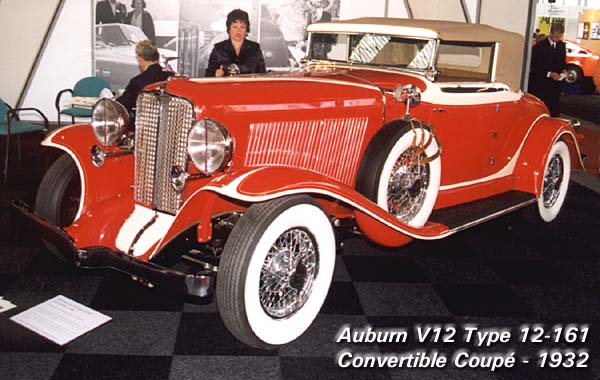 Auburn made some of the
icons of prewar American motoring history like the the '29 "Cabin
Speedster", one of the first streamlined production cars, and of course the '35
"851 Speedster" with its 100 mph guarantee. The exhibited car shown on the
pictures is lesser known, but it shared the fact that it lost the company money.
Auburn made some of the
icons of prewar American motoring history like the the '29 "Cabin
Speedster", one of the first streamlined production cars, and of course the '35
"851 Speedster" with its 100 mph guarantee. The exhibited car shown on the
pictures is lesser known, but it shared the fact that it lost the company money.
E.L. Cord managed the Auburn company from 1924 and he tried to position it as an upmarket
marque, competing with the likes of Cadillac and Packard. Following the trend of
multi-cylinder engines Auburn introduced the V12 in 1932. It wasn't a success due to the
recession in those days and in 1934 the V12 range was already dropped.
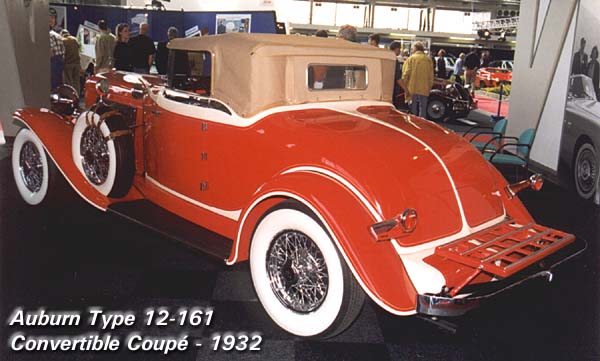 An exotic and rare car
also, this Type 12-161. Its bodywork design looks rather similar to that of the Cord L-29
range. Most Auburn V12s were fitted with a bodywork by the "Limousine Body
Company", a coachbuilder that was part of E.L. Cord's expanding empire, so that
probably explains the resemblance.
An exotic and rare car
also, this Type 12-161. Its bodywork design looks rather similar to that of the Cord L-29
range. Most Auburn V12s were fitted with a bodywork by the "Limousine Body
Company", a coachbuilder that was part of E.L. Cord's expanding empire, so that
probably explains the resemblance.
The V12 engine was built by Lycoming, a company also owned by Cord and best known for its
aircraft engines . It has a 6407 cc displacement and produces about 160 hp.
This car has been beautifully restored and is in excellent condition. Very nice to see
such a fine example of America's opulent exclusive car era.
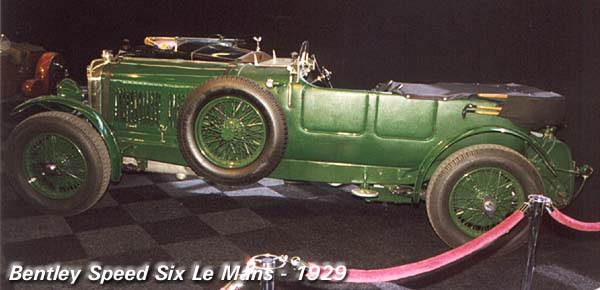 Talking about icons: this car
epitomizes the original Bentley character. W.O. Bentley's cars won the 24 hours race of Le
Mans five times: in 1924, 1927, 1928, 1929 and 1930. With each victory the Bentley name
became more legendary and the most famous victory was that of 1929 when the four entered
Bentleys finished in the first four places.
Talking about icons: this car
epitomizes the original Bentley character. W.O. Bentley's cars won the 24 hours race of Le
Mans five times: in 1924, 1927, 1928, 1929 and 1930. With each victory the Bentley name
became more legendary and the most famous victory was that of 1929 when the four entered
Bentleys finished in the first four places.
The "Speed Six" model was introduced in 1929 as a more sporting version of the
"Big Six" that went into production in 1926. It featured the mighty 6.5 litre 6
cylinder engine and it could well do over a 160 kph.
This car is fitted with the racing type bodywork that also featured on the more famous 4.5
litre Bentleys, and in this voluminous trim these cars were entered in all kinds of races
(and were successful too). Hard to imagine nowadays...
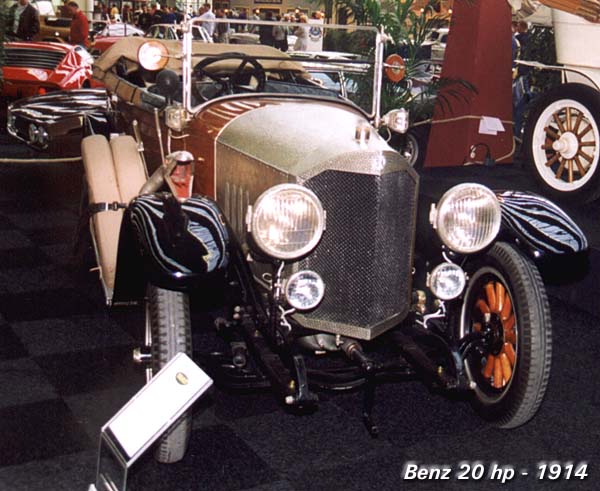 Also hard to imagine nowadays is that Daimler and Benz were once separate
marques. In fact, both German pioneer marques were actually rivals. Both Karl Benz and
Gottlieb Daimler started out at the end of the 19th century building stationary combustion
engines for industrial use and almost simultaneously introduced "horseless
carriages" around 1886, although neither knew each other.
Also hard to imagine nowadays is that Daimler and Benz were once separate
marques. In fact, both German pioneer marques were actually rivals. Both Karl Benz and
Gottlieb Daimler started out at the end of the 19th century building stationary combustion
engines for industrial use and almost simultaneously introduced "horseless
carriages" around 1886, although neither knew each other.
Karl Benz was a pioneer but was also very conservative and after developing cars for about
twenty years and establishing cars as a practical means of transport, he left his own
company in 1906. His conservatism got in the way of necessary innovations and was leading
the Benz company to bankruptcy.
After Benz's departure Hans Nibel became the technical director and he was responsible for
all Benzes up to the merger with German Daimler (Mercedes) company in 1926.
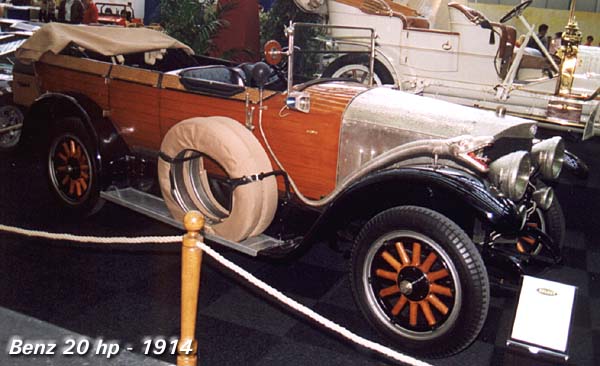 This 8/20 HP model (the "8" indicated the amount of horsepower on
the road taxation scale) was a pretty standard "midrange" car. It's built in the
traditional way, where Benz delivered the chassis-engine combination and a coachbuilder of
choice fitted it with the desired bodywork. In this case it's a nice open tourer with a
decorative wooden paneling and an expressive snake-shaped horn.
This 8/20 HP model (the "8" indicated the amount of horsepower on
the road taxation scale) was a pretty standard "midrange" car. It's built in the
traditional way, where Benz delivered the chassis-engine combination and a coachbuilder of
choice fitted it with the desired bodywork. In this case it's a nice open tourer with a
decorative wooden paneling and an expressive snake-shaped horn.
The engine is a 4 cylinder, 2080 cc side-valve unit that was produced up to well after the
first World War.
Go to the next page by clicking the arrows pointing right...
![]()